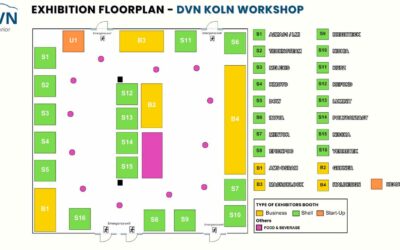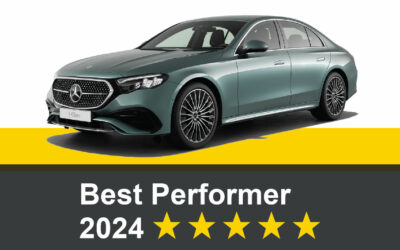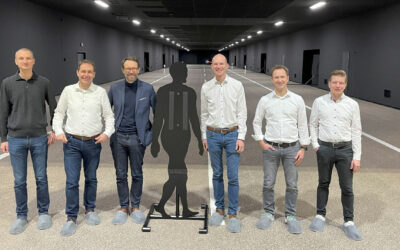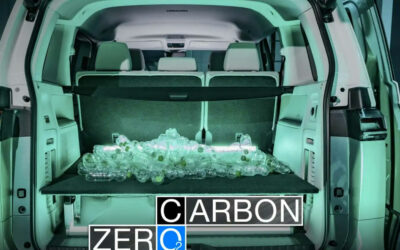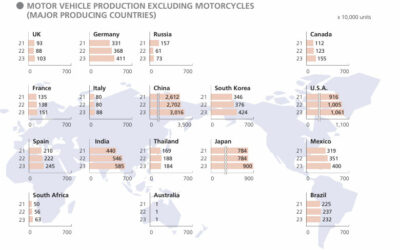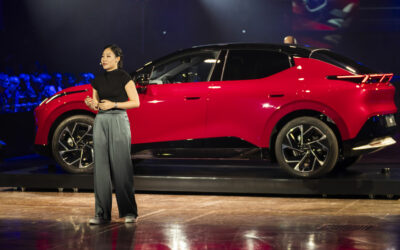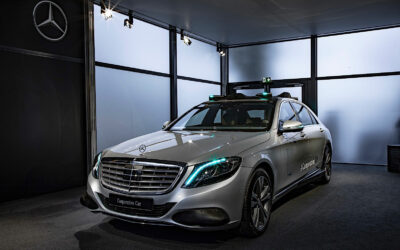Numerous great presentations were made at the DVN Munich event. You can read all about them in the event report, which has just gone live today. Meanwhile, here are some of the main technologies which look to have a great future and possible applications to save time, cut cost, create new designs, and reduce CO2:
- Digital twin to develop faster: how can our CAD be translated as fast as possible into optical concepts, including thermal simulation, optical rendering, pedestrian crash results, and performance ratings (NCAP, HSPR, IIHS, Consumer Reports…)? How can digital twins modify the original A-surface from design to give the correct performance and specification? how important is rendering simulation to shorten development loops?
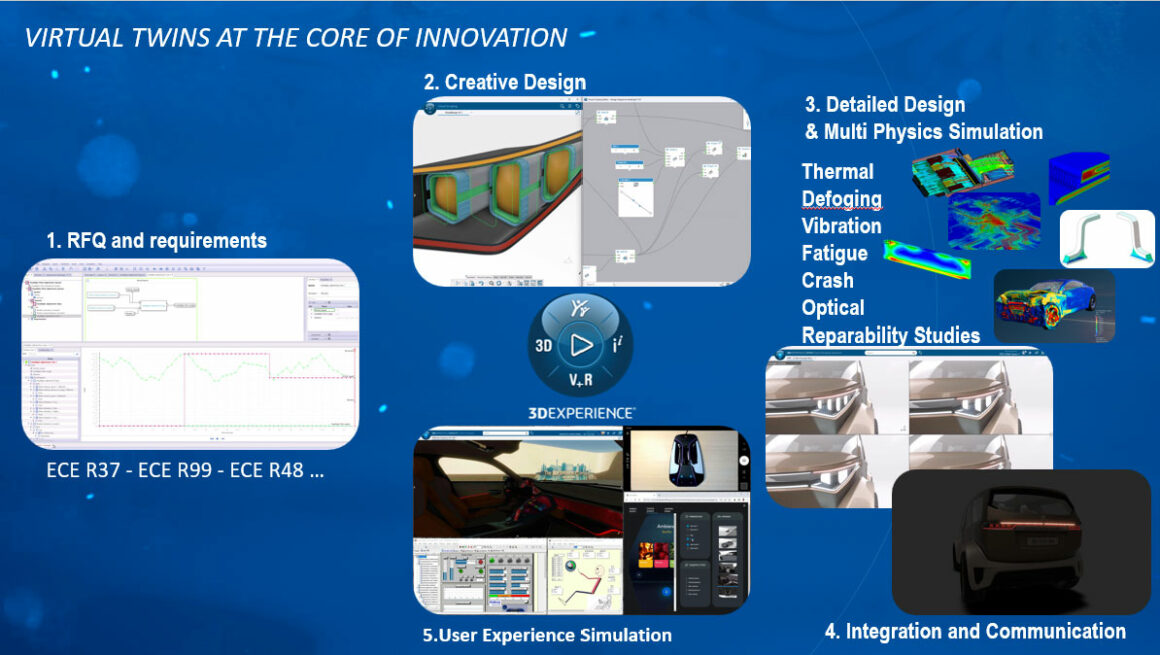
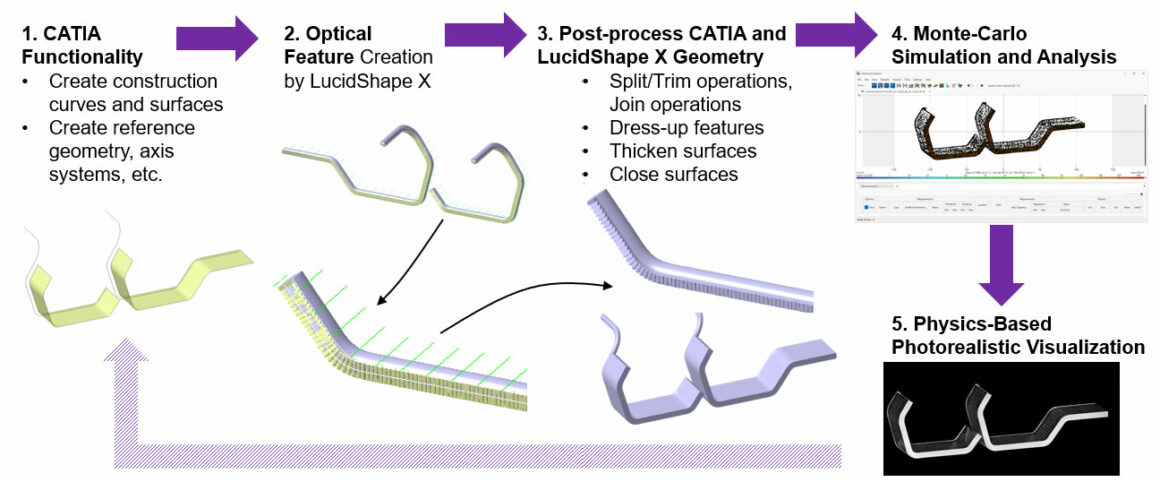

- MiniLED and MicroLED displays: light source innovation is continuing to push the design boundaries.
Liaowang presented their latest MDL Plus release on the Lynk & Co 900 with 10-kilopixel front ISD with 2mm pitch and 2,500 cd/m2 luminance. Mind presented an interesting mock-up of a lamp including transparent display in front of low and high beam (‘Hello’).

Next steps were shown by tier-2 suppliers: Left to right, here are flexible RGB miniLEDs from LiteOn (1.25mm pitch, 4 kcd/m2) · Refond’s miniLED with 0.92mm pitch (Great Wall SAR) and demo with 0.39mm pitch ·
Everlight Vueral microLED demo with 0.1mm pitch · Vueral microLED with 0.2mm pitch and 6 kcd/m2 luminance:

- Diffusive solution: designers strive for homogeneous light from all possible viewing angles, and R&D work seeks to minimize cost and power consumption. The Skytop BMW design is quite an interesting example with DRL height 12mm and rear position lamp height 4mm. New solutions are coming with efficient solutions:

Nexlide from LG Innotek (Nexlide A, 1.8W rear position lamp) and Nexlide Vision shown at CES ’25 with 5×5mm pixel and 5W/m2 power consumption.

Laser texturing and films to scatter the light—L-R here Brightview technology, Reiche, Microrelleus:

- ADB Design-to-cost solution: proposals from Nichia (standard ADB engine with 16 or 24 pixels), Lumileds (Luxeon NeoExact with direct imaging system), and LiteOn (chip on board technology to improve thermal dissipation)

• Miniaturization of projection systems for welcome sequences or signalling road projection: 3-colour lasers and MEMS from Maradin and Infineon: FoV 45° × 30° and > 600 kilopixels, size < 60 cm3), and simple solutions from Odelo—a Gobo system and sequential activation of 3 LEDs.

- Lasers for lighting applications: Appotronics, already delivering an RGB laser DLP on Smart № 5 for welcome / cinema application, showed an extravagant concept of distributed illumination from a central laser light engine, and cooled by the vehicle’s battery cooling system. More will come soon with a demo at the Shanghai autoshow in April; DVN will cover that event.
This architecture, if dreams come true, could be a total gamechanger for vehicle architecture.

- Sustainable solutions: Big variety of initiatives and ideas to lower the CO2. A few examples of many discussed during the event: 80 per cent of the possible CO2 reduction is during the design phase. For example: reducing power consumption by using the likes of ams OSRAM’s DRL proposal—7W with XLS, compared to an average 21W DRL power consumption analysis done by A2MAC1. Replaceable « LED bulb » architecture for easy repairability and recyclability (Volvo trucks and ams OSRAM’s XLS solution). Mucell technology to reduce component weight (Renault). Usage of sustainable polymer (ZKW target 80 per cent in 2032), low carbon aluminium and sustainable PCB (Rise). Development of collecting waste, and compounding plants to develop circular solution (Sabic and Covestro). Development of PFAS-free solutions.

